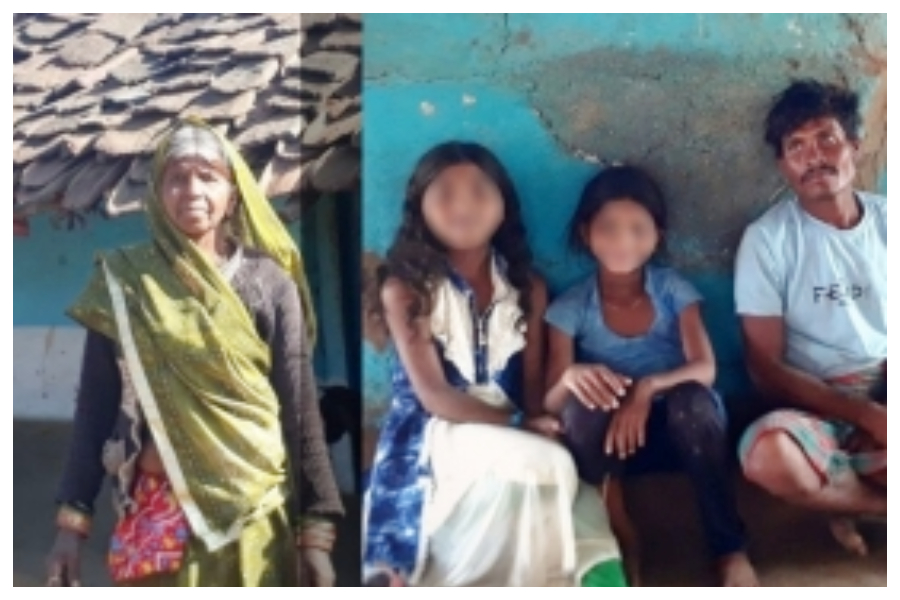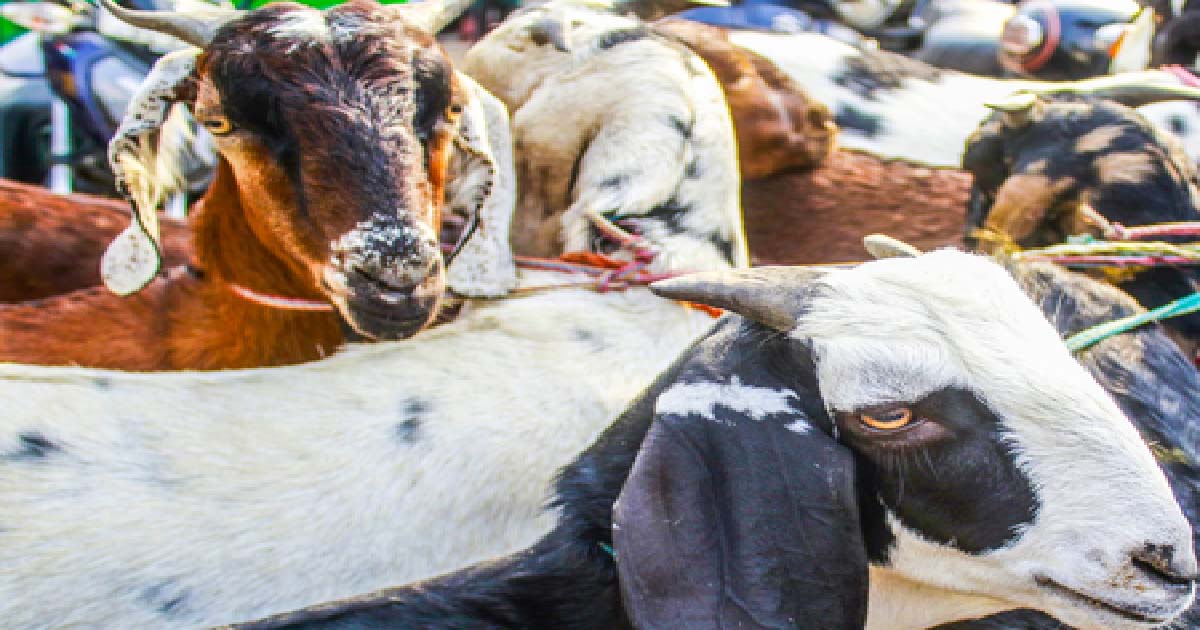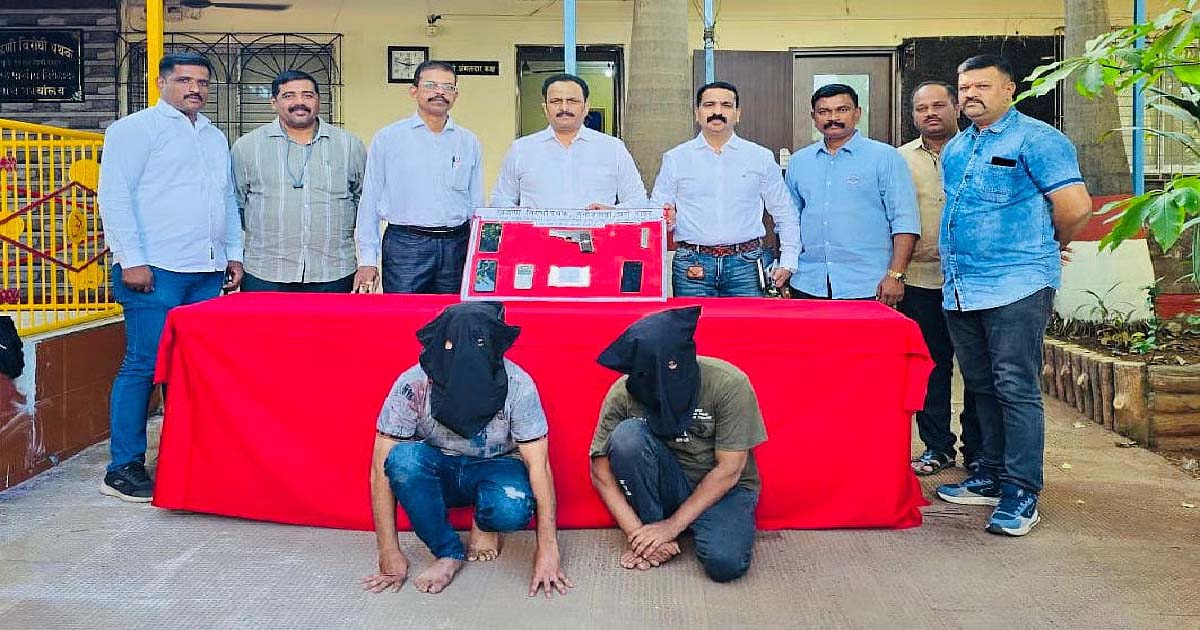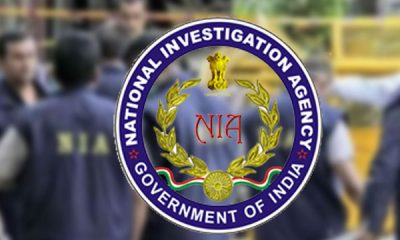Crime
Migration Mess: No jobs in hand amid food crisis, Madhya Pradesh’s Khandwa witnesses tribal exodus

Adivasis from the region move to other states for employment, only to find themselves worked to the bone, living in grim conditions and often cheated of their wages or held hostage by employers.
“I have a wife and five daughters, but there’s no work in the village. Even if you find some, the panchayat takes months to pay us,” said 35-year-old Poonamchand Sitaram Gautam, a resident of Khandwa district in Madhya Pradesh, who recently returned from Koratala in Telangana, where he was employed as a construction worker.
“Under the Public Distribution System, we receive just 5 kg of foodgrains for each member of the family every month. But these rations barely last a fortnight,” he added, alluding to the food crisis in his tribal-dominated village of Dabhia in the state’s Khalwa region.
Based on a field study conducted in 12 states by Ekta Parishad, Madhya Pradesh is purported to have the highest inter-state migration rate — standing at 32.39 per cent, Khandwa being one of the districts leading. According to estimates by a local body, between 5,000 and 10,000 tribals migrate out of Khalwa every year to work as labourers in other states.
Khalwa is spread over 70 to 100 km from the district headquarters. While many villages of this block are part of the Khandwa-Betul State Highway, most of Khalwa falls under the jurisdiction of the forest department, with 90 per cent of the population living in remote areas. In fact, when 101Reporters visited Dabhia, we found that at least two members from each house had migrated to other states for work.
Last year, Gautam’s 16-year-old daughter Garima found work as a labourer to build drains under the Mahatma Gandhi National Rural Employment Guarantee Act (MGNREGA). After working eight hours a day for five weeks, Garima was paid only two weeks’ worth of wages. When her mother Rajni Bai questioned the panchayat, she was told that the money had been transferred to her account, but they have yet to receive it.
Jamna Kallu Chauhan, too, shared her woes. “In the last two weeks, I carried out digging work for the panchayat eight hours a day. But I was paid only for one week. I approached the panchayat office in Semliya repeatedly, but no one cooperated with me,” the 60-year-old said.
The sarpanch of Semliya panchayat Pyari Bai Ramesh Takher, however, denied any outstanding payments.
“No labourer’s wages are outstanding with the panchayat,” she claimed. “The money has been transferred into their accounts. The villagers often withdraw money and blame us later.”
No logic to the numbers
Kishore Kumar Uike, the CEO of Janpad panchayat, insisted that the district is continually opening up job opportunities for the area’s local residents.
“Janpad panchayat has created employment for 17,000 labourers in the development block,” he said. “I don’t understand why people are migrating for work. Even today, if anyone approaches us for work through the panchayat or district, we will provide them with work.”
According to the MGNREGA website, which currently seems inaccessible, 3,821 days of wages were generated in Khalwa from May 2020 to May 2021, benefiting 644 workers. The work given to labourers included pond construction, canal deepening and dam checks. The website has had no updates since then.
A hunger-induced distress migration
According to Prakash Michael, treasurer of the Spandan Samajseva Samiti, an organisation working to provide nutrition and employment to these tribals, the primary cause for migration is the food crisis in the region, which has increased in the last couple of decades.
“Adivasis have ditched growing traditional crops and turned to cash crops such as soybean. Bajra and other millets such as koda and kutki, once the backbone of their nutrition, are no longer visible in the fields. They use most of the money they earn by selling produce to repay loans. They are left with very little foodgrains, so this is basically hunger-induced distress migration,” Michael told 101Reporters.
This explanation holds true for 60-year-old Jamna, who now lives alone in her hut. Her husband, Kallu Chauhan, had “taken up a contractual job of harvesting moong in Nahali, Harda district, despite being terribly ill. The family’s financial crisis had pushed him to move, and within three days, we lost him to the illness.”
One lakh labourers migrate from Nimar
While the administration has no official figures to share, Spandan Samajseva Samiti, which collects data for land surveys, estimates that around 1 lakh people from Khandwa, Khargone, Barwani and Burhanpur of Nimar district migrate to Maharashtra, Telangana, Karnataka, Goa and Andhra Pradesh each year.
However, this large workforce is unorganised and unprotected. These labourers are neither insured by their employers, nor are they provided safety equipment for use while working. This often leads to their death, and since there are no official records of migrant labourers, employers shirk their responsibilities by deeming them mere accidents.
Under the Inter-State Migrant Workmen Act, the employer must provide migrant workers with food, lodging, healthcare and social activities. Labour officials must be kept in the loop to ensure that workers’ rights are not violated. Also, the figures of migrant workers must be displayed on the Migrant Labourer Portal, though no data appears to track this information.
District Labour Officer S.S. Alawa explained that the act “can be invoked only if the contractors or residents officially inform the department about their migration, which the tribals here fail to do. Hence, they cannot exercise any rights under this law”.
Wily contractors, callous employers
Furthermore, contractors here deploy locals to connect them with labourers. These people take advantage of their knowledge of the Korku dialect and lure the tribals by promising large sums of money as wages. They are often paid an advance so they believe it’s a good deal and manage to convince their friends and neighbours, too.
On the appointed day, the contractor’s vehicle arrives at the village to transport the migrants. The journey usually takes place at night, so the workers don’t recognise where they are being taken. They often don’t find out for days and weeks which village, district or state they are working in. The contractor shares his mobile number to placate the families, but the phone is often turned off once they set out with the migrant labourers.
Daji Lofa, a 30-year-old who returned from harvesting sugarcane in Maharashtra, recalls a contractor who had come to the village before Diwali last year and promised everyone cane-cutting work for three months. He had also promised them huge amounts of money, which would enable them to stay home without working for the rest of the year. He had paid an advance of Rs 7,000 to one of the workers. A week after Diwali, the contractor arrived at 11 pm with two mini Eichers and took 40 people with him. But they were refused pay after putting in hours of hard labour.
Such are the kinds of experiences that the tribals of Khandwa attempt to flee.
Babu Mangal, one of the workers from Khalwa held hostage in Pandharpur, Maharashtra, last year, said they were treated worse than animals. He, along with his wife, had to continue harvesting sugarcane despite being terribly ill.
“We didn’t get any treatment when we were ill. We had to arrange for our own food and sleep in the open fields or inside warehouses,” the 50-year-old told 101Reporters.
Similarly, when Sunita Kajle from Langoti village went to Maharashtra to work, she found out she was pregnant. But she was still forced to continue working long hours without relief or proper nutrition until the sixth month of her pregnancy. As a result, she gave birth to a malnourished daughter after returning.
In some cases, the tribals bear the consequences of this survival act — the migration — longer than they could have anticipated, at times for life.
Take Munni Bai, for instance. She injured herself while working at a brick kiln and continues to live with it. She had dropped bricks on her feet, which initially caused swelling and later became worse. Munni can no longer work due to her injured leg and has received no compensation from neither the contractor nor the government.
Socio-economic factors
Khandwa district has a population of 13,10,061, of which 80.20 per cent live in villages. The literacy rate of Khalwa is only 43.10 per cent (51 per cent among males and 34 per cent among females). Despite this, the proportion of labour in Khalwa is 17.38 per cent, of which 9.66 per cent is male and 7.72 per cent female. Agriculture is the primary source of income, but the people here barely own any land, 2 acres per family on an average.
The percentage of total agricultural farmers in the tehsil is 14.08 per cent in Khalwa, of which 9.88 per cent are male and 4.20 per cent are female. There’s no focus on employment-oriented education, and the entire sector is dependent on resources from agriculture and forests.
In 2009-2010, the state government had created natural resource-related jobs in Awliya under the Small Forest Produce Association, for the manufacture of incense sticks, perfumes, bamboo furniture and household items. Initially, over a 100 people were employed under this scheme, but they could not grow beyond making incense sticks, which wasn’t financially viable and hence, discontinued.
Crime
Bihar: Robbers posing as police steal goats purchased under CM’s scheme

Patna, Dec 12: A shocking incident has emerged from Samastipur’s Vidyapati police station area, where four men posing as police personnel stole goats purchased under Chief Minister Nitish Kumar’s Women’s Employment Scheme.
The incident occurred on Friday in Dhaneshwarpur South Panchayat, Ward No. 9, when the victim, Champa Devi and her family were asleep.
Suddenly, a four-wheeler pulled up outside their home, and the men inside woke the family.
Claiming they were police officials searching for a liquor mafia suspect, the men forcibly entered the premises.
Inside, they took away four goats that Champa Devi had bought using the Rs 10,000 financial assistance she received under the Women’s Employment Scheme.
When she tried to stop them, the accused reportedly brandished a pistol, abused her, and threatened to kill her.
“They said they were police and that a liquor mafia had passed that way. They showed a pistol and told us to move aside. Fearing for our lives, we stepped back. They loaded all four goats into their vehicle and fled,” said Champa Devi.
The same group allegedly targeted another house nearby, stealing three more goats.
According to the victims, they too had purchased the goats with government assistance.
Before the villagers could understand what was happening, the thieves fled in their vehicle with all seven goats.
Locals have demanded strict police action. However, Vidyapati police said they are awaiting a formal complaint to begin proceedings.
“A report of theft has been received, but no application has been filed yet. Action will be taken as soon as we receive it. The gang involved is being investigated,” said Suraj Kumar, Police Officer, Vidyapati Police Station.
The area has witnessed several such goat thefts in the past. Thieves often arrive in four-wheelers—not on motorcycles or on foot—making quick escapes difficult to track.
In an earlier incident a few years ago, villagers even held a DSP hostage after mistaking him for a goat thief.
Under Chief Minister Nitish Kumar’s Women’s Employment Scheme, women are provided Rs 10,000 each to start income-generating activities.
So far, 1.56 lakh women have received the amount. After six months of evaluation, beneficiaries showing positive outcomes become eligible for Rs 2 lakh in additional support to expand their ventures.
Crime
Thane Crime Branch Busts Mephedrone Racket, Seizes Drugs, Firearm And Arrests Two In High-Intensity Raid

Thane: The Anti-Extortion Squad of the Crime Branch, Thane, acting on secret information, raided a gang involved in the illegal sale of Mephedrone (M.D.) and arrested two accused. Police seized 108.8 grams of Mephedrone worth Rs 10.88 lakh, a country-made pistol, and a live cartridge—totaling Rs 11.41 lakh.
According to the sequence of events, on the night of December 8 around 10:50 PM, the police team raided Shri Gajanan Residency in Adavali-Dhokali, Kalyan East, and caught Aakib Iqbal Bagwan (33). A large quantity of M.D. and an unlicensed country-made pistol were recovered from his possession. Further probe revealed that Bagwan was already wanted in two NDPS cases at Bazarpeth Police Station, Kalyan.
During interrogation, Bagwan disclosed that the pistol was supplied to him by Bharat Shatrughna Yadav. Using technical investigation and confidential sources, the police detained Yadav as well. A live cartridge was recovered from him during the search.
A case has been registered against both the accused at Manpada Police Station under relevant sections of the NDPS Act, the Indian Arms Act, and the Maharashtra Police Act.
The operation was carried out under the guidance of DCP Amarsingh Jadhav and ACP Vinay Ghorpade by Senior Police Inspector Shailesh Salvi, Assistant Police Inspector Sunil Tarmale, and team members Bhosle, Kanade, Thakur, Rathod, Shinde, Patil, Gaikwad, Jadhav, Gadge, Pavaskar, Hivare, Waykar, Shejwal, and Bhosle.
Crime
CBI court sentences ex-village pradhan, fair price shopkeeper to 10 year-jail term in SGRY fraud case

New Delhi, Dec 12: A special CBI court in Lucknow has sentenced two individuals — a former village pradhan and a fair-price shopkeeper — to 10 years of rigorous imprisonment in a major corruption case involving misappropriation of over Rs one crore under the Sampurna Grameen Rozgar Yojna (SGRY), the agency said on Friday.
The verdict was delivered on Thursday. According to an official release, the court convicted Satya Narayan Prasad Patel, then village pradhan, and Shahnawaj Alam, then fair-price shopkeeper (kotedar), imposing a total fine of Rs 55,000 on the two.
The court held them guilty of causing wrongful loss to the government exchequer by siphoning off cash and foodgrains allocated for rural employment and welfare.
The case dates to 2006, when Narhi Police Station in Ballia district registered an FIR alleging large-scale irregularities in SGRY distribution.
The Central Bureau of Investigation (CBI) took over the probe on October 31, 2008 and registered a case against 172 accused persons, including officials responsible for implementing the scheme at the village and district levels.
Investigators found that the accused caused a wrongful loss of Rs 65 lakh in cash and misappropriated foodgrain worth Rs 45.26 lakh, preparing forged records and using fraudulent means to divert government resources intended for the rural poor.
“It was alleged that the accused persons had caused wrongful loss to the Government Exchequer to the tune of Rs 65.00 lakh in cash and foodgrain worth Rs 45.26 lakh and corresponding gain to themselves by cheating, fraud, and preparing forged documents under Sampurna Grameen Rozgar Yojna (SGRY),” the CBI said in its press note.
After a detailed investigation, the CBI filed a charge sheet on November 10, 2010, against three individuals: Satyendra Singh Gangwar, then Chief Finance and Accounts Officer of the District Rural Development Agency (DRDA) Ballia; Satya Narayan Prasad Patel; and Shahnawaj Alam.
Following the trial, the CBI court convicted Patel and Alam but acquitted Gangwar of all charges.
-

 Crime3 years ago
Crime3 years agoClass 10 student jumps to death in Jaipur
-

 Maharashtra1 year ago
Maharashtra1 year agoMumbai Local Train Update: Central Railway’s New Timetable Comes Into Effect; Check Full List Of Revised Timings & Stations
-

 Maharashtra1 year ago
Maharashtra1 year agoMumbai To Go Toll-Free Tonight! Maharashtra Govt Announces Complete Toll Waiver For Light Motor Vehicles At All 5 Entry Points Of City
-

 Maharashtra1 year ago
Maharashtra1 year agoFalse photo of Imtiaz Jaleel’s rally, exposing the fooling conspiracy
-

 National News1 year ago
National News1 year agoMinistry of Railways rolls out Special Drive 4.0 with focus on digitisation, cleanliness, inclusiveness and grievance redressal
-

 Maharashtra1 year ago
Maharashtra1 year agoMaharashtra Elections 2024: Mumbai Metro & BEST Services Extended Till Midnight On Voting Day
-

 National News1 year ago
National News1 year agoJ&K: 4 Jawans Killed, 28 Injured After Bus Carrying BSF Personnel For Poll Duty Falls Into Gorge In Budgam; Terrifying Visuals Surface
-

 Crime1 year ago
Crime1 year agoBaba Siddique Murder: Mumbai Police Unable To Get Lawrence Bishnoi Custody Due To Home Ministry Order, Says Report


















